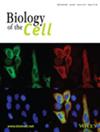SOX15 Transcriptionally Decreases the Level of MMP2 and Inhibits Vasculogenic Mimicry to Slow Down the Progression of Ovarian Cancer
Abstract
Background Information
Vascular mimicry (VM) is pivotal for promoting tumor cell proliferation and invasion in ovarian (OV) cancer patients. Sex-determining region Y-box 15 (SOX15) suppresses the malignant growth of tumor cells. However, the function of SOX15 in OV cancer remains undefined. Using SKOV-3 and ES2 cell lines, along with xenograft models in nude mice, we investigated the effects of SOX15 on tumor cell growth and VM formation in OV cancer, as well as the underlying mechanisms.
Results
We found that SOX15 inhibited the proliferation, migration, and invasion of SKOV-3 cells. SOX15 overexpression reduced VM formation in SKOV-3 cells, accompanied by decreased levels of VE-cadherin and vascular endothelial growth factor A (VEGFA). Similarly, SOX15 suppressed ES2 cell proliferation and motility. Additionally, xenograft experiments demonstrated that SOX15 knockdown increased tumor volume in mice, along with upregulated expression of Ki67 and matrix metalloproteinase-2 (MMP2) in tumor tissues. CD31/PAS double staining revealed that silencing SOX15 promoted VM formation in tumors. Mechanistically, SOX15 overexpression downregulated MMP2 at both mRNA and protein levels, suppressing VM formation and thereby slowing OV cancer progression. Dual-luciferase reporter assays revealed that SOX15 overexpression inhibited MMP2 promoter activity, and chromatin immunoprecipitation followed by PCR (ChIP-PCR) confirmed the direct binding of SOX15 to the MMP2 promoter.
Conclusions
Our results indicate that SOX15 transcriptionally represses MMP2 expression, thereby inhibiting VM formation and ultimately suppressing OV cancer initiation and progression.
Significance
We establish a theoretical foundation for developing novel therapeutic approaches targeting the SOX15/MMP2 axis in OV cancer treatment.


 求助内容:
求助内容: 应助结果提醒方式:
应助结果提醒方式:


